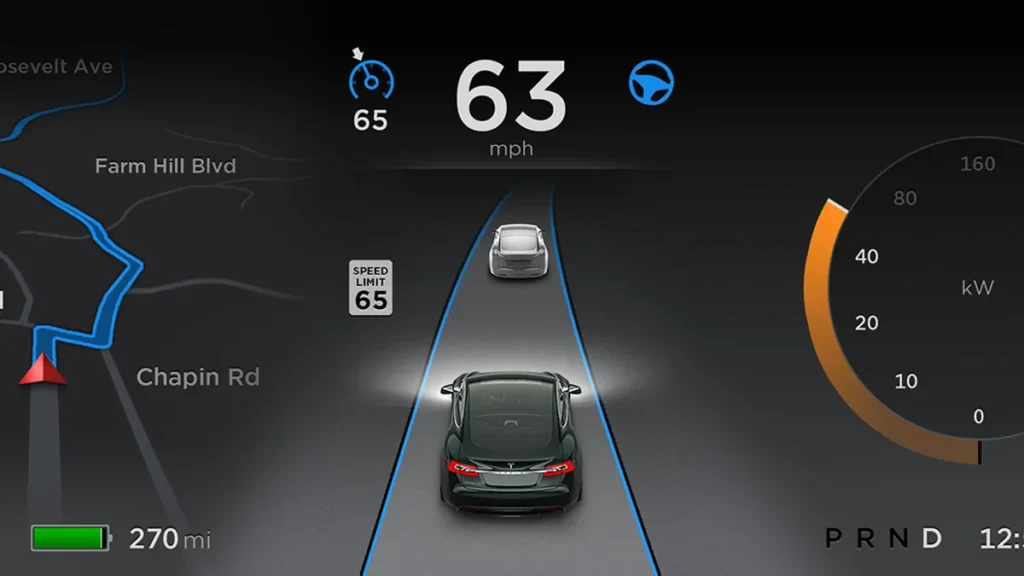Tesla Autopilot is a groundbreaking semi-autonomous driving feature that has revolutionized the electric vehicle industry. From lane-keeping to adaptive cruise control, the Tesla Autopilot system utilizes cutting-edge technology to assist drivers on the road. But what makes Tesla Autopilot so powerful? The answer lies in its deep integration with NVIDIA GPUs, which play a crucial role in the system’s artificial intelligence (AI) capabilities.
What is Tesla Autopilot?

Tesla Autopilot is a semi-autonomous driver assistance feature that helps drivers navigate the road with ease. It can perform tasks like maintaining lane position, automatic lane changes, self-parking, and even summoning the car from a parking spot. Tesla’s vision is to eventually achieve full self-driving capability, allowing the vehicle to operate without human intervention.
How Does Tesla Autopilot Work?
At the heart of Tesla Autopilot’s technology is its use of deep neural networks, which rely on massive amounts of data to learn and make decisions. The secret to the system’s high performance is the use of NVIDIA GPUs, which are specialized processors designed to handle the complex computations required for AI. These GPUs enable Tesla Autopilot to process vast amounts of real-world driving data, allowing it to learn and improve over time.
Tesla Autopilot and NVIDIA GPUs: A Strong Partnership
Since the first generation of Tesla Autopilot hardware, NVIDIA GPUs have been the driving force behind its AI capabilities. Initially, Tesla used NVIDIA Tegra processors, but the system evolved with the NVIDIA Drive PX 2 platform, which significantly increased its computing power. Although Tesla has now developed its own custom chips, NVIDIA GPUs are still used for training the massive neural networks that Tesla Autopilot relies on.
The Role of NVIDIA A100 GPUs in Tesla’s Supercomputer
Tesla’s supercomputer, Dojo, which powers the training of Tesla Autopilot’s AI, is equipped with NVIDIA A100 GPUs. These GPUs are incredibly powerful, capable of processing trillions of operations per second. By leveraging the computational power of NVIDIA A100 GPUs, Tesla Autopilot can train more accurate and reliable neural networks, improving the system’s performance in various driving scenarios.
The Future of Tesla Autopilot
As Tesla continues to innovate, the role of NVIDIA GPUs remains critical in advancing Tesla Autopilot technology. With continued improvements in AI training and neural network performance, Tesla moves closer to its goal of achieving full self-driving capability, transforming the way we think about autonomous driving.
Conclusion
Tesla Autopilot is a marvel of modern technology, and its success is built on the power of NVIDIA GPUs. By processing massive datasets and training sophisticated AI models, these GPUs ensure that Tesla Autopilot remains at the forefront of the autonomous driving revolution. As Tesla pushes the boundaries of what’s possible, the partnership with NVIDIA continues to shape the future of transportation.
What is Tesla Autopilot?
Tesla Autopilot is an advanced driver assistance system that uses cameras, sensors, and AI to assist with tasks like lane-keeping, adaptive cruise control, and self-parking. It’s designed to make driving easier, with the goal of eventually achieving full self-driving capabilities.
How does Tesla Autopilot work?
Tesla Autopilot uses deep neural networks powered by NVIDIA GPUs to process data from its cameras and sensors. This data allows the system to understand the environment around the car and make decisions like lane changes and speed adjustments.
What role do NVIDIA GPUs play in Tesla Autopilot?
NVIDIA GPUs are essential for powering the AI in Tesla Autopilot. These GPUs help process large amounts of real-time data, enabling the car to make decisions like lane-keeping and automatic braking.
Is Tesla Autopilot fully autonomous?
No, Tesla Autopilot is currently a semi-autonomous system. It requires human supervision and intervention in certain situations. Tesla’s ultimate goal is to achieve full self-driving capability, but it’s not there yet.
What kind of NVIDIA GPUs are used in Tesla Autopilot?
Tesla originally used NVIDIA’s Tegra and Drive PX 2 platforms for Autopilot. While Tesla now uses its custom FSD chip for onboard processing, NVIDIA A100 GPUs are still used for training Tesla’s AI models in their Dojo supercomputer.
How powerful are the NVIDIA GPUs used in Tesla Autopilot?
The NVIDIA A100 GPUs used to train Tesla Autopilot’s AI are extremely powerful, capable of performing trillions of operations per second. These GPUs help Tesla train complex neural networks that enhance the vehicle’s self-driving capabilities.
Why did Tesla switch to custom chips for Autopilot?
Tesla developed its own custom FSD chip in 2019 to meet the specific needs of autonomous driving, offering better performance and efficiency for onboard processing. However, Tesla still uses NVIDIA GPUs for large-scale AI training.
What is Tesla’s Dojo supercomputer, and how does it relate to NVIDIA GPUs?
Tesla’s Dojo is a supercomputer used to train Autopilot’s AI models. It relies on NVIDIA A100 GPUs to process massive datasets and improve the system’s accuracy and reliability in real-world driving scenarios.
Can Tesla Autopilot function without NVIDIA GPUs?
Tesla’s custom FSD chip handles the real-time processing in the car, but NVIDIA GPUs remain critical for training the AI models behind Tesla Autopilot. These GPUs help ensure the system continues to improve and evolve.
Is Tesla Autopilot safe to use?
Tesla Autopilot is designed to enhance driver safety by assisting with tasks like lane-keeping and collision avoidance. However, it is not a fully autonomous system, and drivers must remain attentive and ready to take control when needed.
